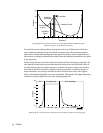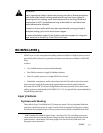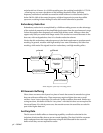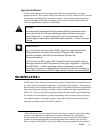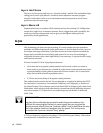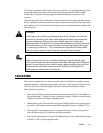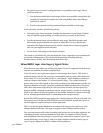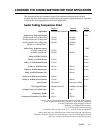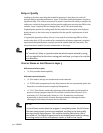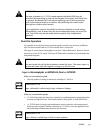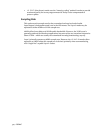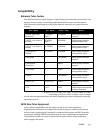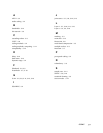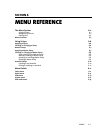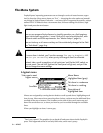
5-12 CODING
Delay vs. Quality
Looking at the chart, one thing that should be apparent is that there is a trade-off
between delay and audio performance. Layer 3’s excellent audio performance requires a
significant delay. This is because some of its power comes from the ability to analyze the
audio over a relatively long period, and because the audio must traverse four DSPs in the
encoder. Layer 2 requires the next longest delay, and G.722 has minimal delay.
ZephyrExpress permits the coding mode for the send and receive paths to be indepen-
dently chosen, so the choice may be optimized for the specific requirements of each
direction.
It is generally agreed that delays of over 10 ms make live monitoring difficult. When
modes other than G.722 are used and live transmission of remote programs is required,
operational methods like those routinely used with satellite links are a necessity. The
manual section 4 (Audio) has more information on this topic.
h
HOT TIP!
The “round-trip” delay in a typical remote broadcast may be reduced by using
the G.722 algorithm for the return cueing path and Layer 3 or Layer 2 for only the
on-air direction.
Dual vs Stereo vs Joint Stereo in Layer 3
With one transmission path,
• L3 DUAL provides mono capability.
With two transmission paths,
• L3 DUAL mode is simply two simultaneous mono channels.
• L3 STEREO mode compensates for any delay between the two transmission paths, but
keeps the two audio channels completely independent.
• L3 JOINT (Joint Stereo) mode takes advantage of the redundancy which usually is
present in stereo program material. The encoder switches from discrete L/R to
matrixed L+R/L-R dynamically. When in L+R/L-R mode bits are allocated
dynamically to these two bit-streams allowing maximum advantage be taken
advantage of redundancy between the two channels.
h
HOT TIP!
In L3 Joint Stereo mode, when the program is completely mono, the full bitrate
of the two transmission channels are combined, resulting in the best quality
mono signal with ZephyrExpress. This could be used for particularly critical
mono material. The identical signal must be fed to both send busses by setting
the routing switch to AB for microphones inputs, or A+B for line inputs.



